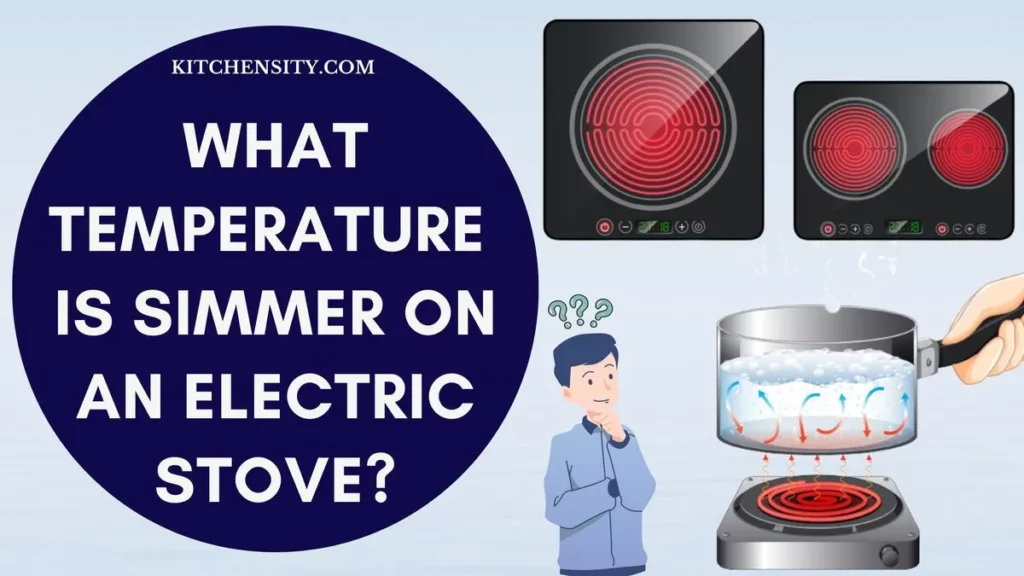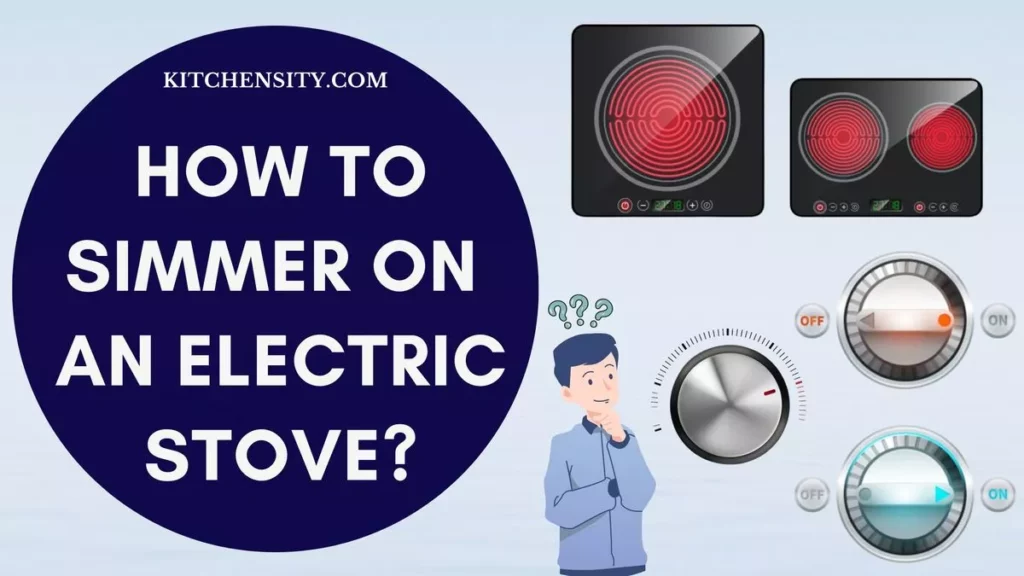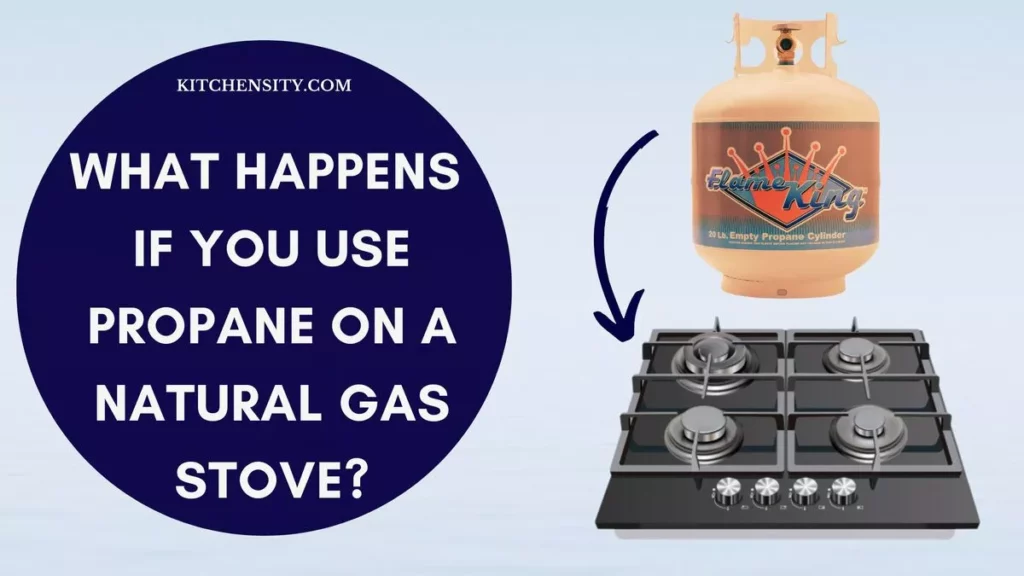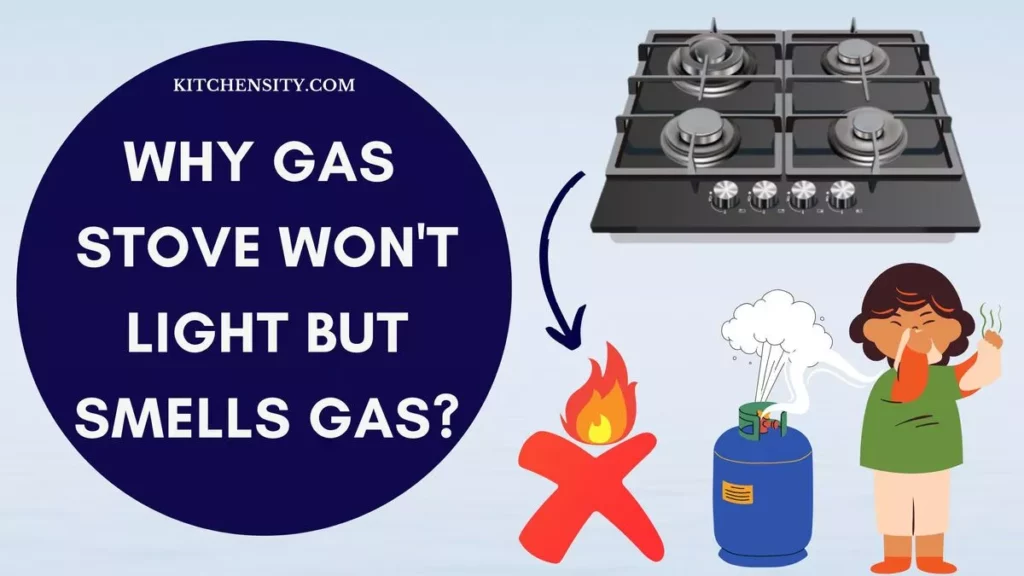Properly venting a gas stove is a fundamental aspect of kitchen safety and functionality.
Whether you’re a seasoned chef or an occasional cook, understanding how to effectively ventilate your gas stove is crucial to ensure the removal of harmful gases and cooking byproducts.
In this guide, we will explore the essential steps and considerations for achieving proper ventilation, allowing you to cook with peace of mind and maintain a healthy indoor environment.
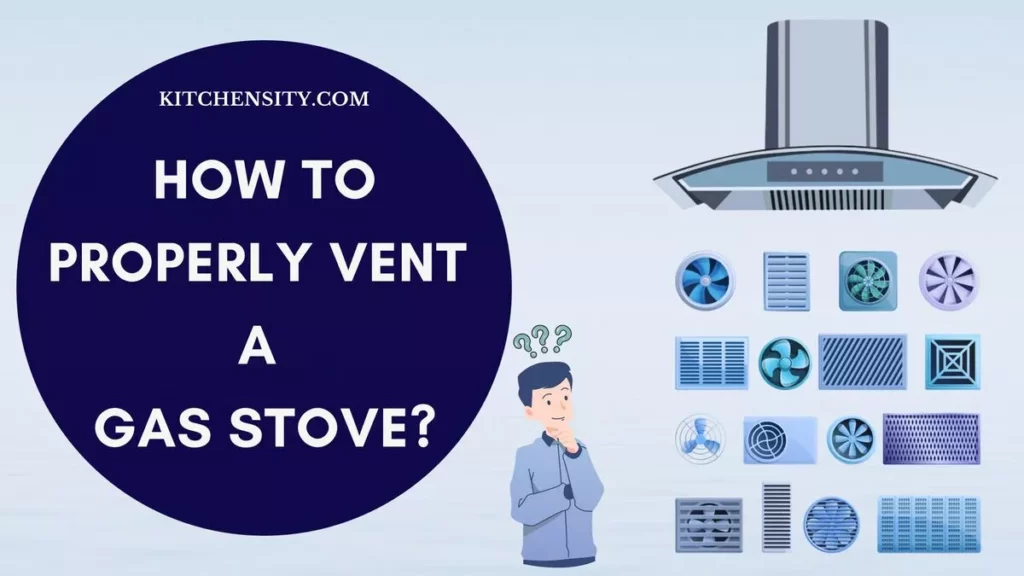
Table of Contents
- 1 How To Properly Vent A Gas Stove?
- 2 Why Proper Ventilation Matters When Using A Gas Stove?
- 3 What Type Of Venting Is Required For A Gas Stove?
- 4 How Should A Gas Stove Be Vented?
- 5 What Is The Best Way To Vent A Range Hood?
- 6 How Do You Vent A Gas Stove Without A Hood?
- 7 How Do You Vent A Gas Stove On The Inside Wall?
- 8 Do Stoves Have To Be Vented Outside?
- 9 Maintenance And Cleaning Of Gas Stoves Vents
- 10 Final Verdict: How To Properly Vent A Gas Stove?
- 11 FAQs (Frequently Asked Questions)
- 11.1 Is It Necessary To Vent A Gas Stove?
- 11.2 Can I Use A Range Hood Designed For An Electric Stove With A Gas Stove?
- 11.3 How Often Should I Clean The Filters In My Range Hood?
- 11.4 Are There Any Alternatives To Ducted Ventilation For Gas Stoves?
- 11.5 What Should I Do If I Suspect A Gas Leak From My Stove?
How To Properly Vent A Gas Stove?
To properly vent a gas stove, first, install a range hood with ducted ventilation that directs cooking byproducts outside. Use rigid metal ducts to ensure efficient airflow, minimizing sharp bends and maintaining a straight path to the exterior. Regularly inspect & clean the ventilation system for optimal performance.
Please refer below for comprehensive instructions on properly venting a gas stove.
Also Read – Do Gas Stoves Need To Be Vented?
Why Proper Ventilation Matters When Using A Gas Stove?
Before delving into the specifics of venting, it’s essential to understand why proper ventilation is vital when using a gas stove.
- Firstly, it’s crucial for safety as gas stoves produce potentially harmful gases like carbon monoxide and nitrogen dioxide during combustion. Adequate ventilation helps expel these gases, preventing health risks.
- Additionally, it prevents indoor air pollution by removing cooking byproducts, ensuring a healthier living environment. Proper ventilation also controls unpleasant odors and enhances cooking efficiency by dissipating excess heat and smoke.
- Lastly, it safeguards your kitchen from heat-related damage. In essence, ensuring your gas stove is well-ventilated is not only about safety but also contributes to a more pleasant and efficient cooking experience.
Also Read – Why Electric Stoves Take Forever To Boil Water?
What Type Of Venting Is Required For A Gas Stove?
The type of venting required for a gas stove primarily depends on the specific setup and your safety and efficiency preferences. Two common types of venting methods for gas stoves are:
Ducted Ventilation (Preferred for Gas Stoves)
This method involves installing a range hood with ductwork that directs cooking byproducts and gases to the outside of your home. Ducted ventilation is the recommended and more effective option for gas stoves.
It efficiently removes harmful gases, such as carbon monoxide (CO) and nitrogen dioxide (NO2), from your kitchen and prevents them from accumulating indoors.
It is considered the safest option for gas stoves, as it ensures that these potentially dangerous gases are expelled from your living space.
Recirculating Ventilation
In this method, a range hood equipped with charcoal filters captures the cooking byproducts, including odors and some airborne particles, but it does not expel them outside. Instead, it filters the air and releases it back into the kitchen.
Recirculating ventilation is generally less effective at removing harmful gases and is often used with electric stoves or in situations where ducted ventilation is not feasible.
While it can help control odors, it does not provide the same level of safety as ducted ventilation for gas stoves.
Also Read – How Hot Do Electric Stove Burners Get?
How Should A Gas Stove Be Vented?
Venting a gas stove is a crucial process that ensures the safe removal of combustion byproducts, including harmful gases like carbon monoxide (CO), from your kitchen. Proper venting involves several steps:
1. Select The Right Location
- Ideally, position your gas stove near an exterior wall. This minimizes the length of ductwork required for venting, which can improve the efficiency of the ventilation system.
- It also reduces the risk of air becoming trapped within the ducts.
2. Choose An Appropriate Range Hood
- Select a range hood that matches the size of your gas stove. The range hood should adequately cover the cooking area to capture all the byproducts effectively.
- Opt for a range hood designed for ducted ventilation. These hoods expel the captured air and byproducts to the outside, ensuring the removal of harmful gases.
3. Calculate CFM Requirements
- Calculate the required Cubic Feet per Minute (CFM) rating for your range hood. This calculation is based on the size of your kitchen.
- As a general guideline, aim for a minimum of 100 CFM per linear foot of stove width. This helps ensure that the range hood can handle the volume of air produced during cooking.
Also Read – Gas Stove Leaking Gas From Burner
4. Proper Ductwork Installation
Proper ductwork installation is a critical aspect of venting a gas stove effectively and safely. It ensures that the ventilation system efficiently removes cooking byproducts, including harmful gases while minimizing resistance to airflow.
Here are the steps involved in proper ductwork installation:
- Choose The Right Duct Material:
- The first step in ductwork installation is selecting the appropriate material. For venting a gas stove, rigid metal ducts are the preferred choice. Common options include galvanized steel or aluminum.
- Avoid using flexible ducts for gas stove ventilation, as they can create resistance and reduce airflow efficiency.
- Plan The Duct Path:
- Carefully plan the path of the ductwork from the range hood to the exterior of your home. It should be as straight and direct as possible, with minimal bends and turns.
- Minimize the number of elbows (90-degree bends) in the ductwork, as each bend increases resistance and reduces efficiency.
- Use Proper Duct Size:
- Ensure that the diameter of the duct is appropriate for your range hood and the volume of air it needs to vent. Refer to the manufacturer’s guidelines for the recommended duct size.
- Using an undersized duct can lead to reduced airflow and decreased venting efficiency.
- Install Smooth Ducts:
- Smooth, rigid ducts are essential for maintaining efficient airflow. Any irregularities or rough surfaces can create turbulence and resistance, reducing the effectiveness of the ventilation system.
- Inspect the interior of the ducts to ensure they are free of debris, dust, or other obstructions that might hinder airflow.
- Minimize Sharp Bends:
- Sharp bends, also known as elbows, in the ductwork should be minimized. When bends are necessary, use gentle, gradual curves instead of 90-degree angles.
- Each sharp bend can cause airflow resistance, so the fewer bends in the ductwork, the better.
- Secure Duct Joints And Seams:
- Properly seal and secure all joints and seams in the ductwork to prevent air leaks. Use high-quality metal tape or mastic sealant designed for HVAC applications.
- Leaks can allow cooking byproducts, including harmful gases, to escape into your home instead of being expelled outside.
- Maintain Adequate Clearance:
- Ensure that the ductwork maintains the required clearance from combustible materials. This helps prevent heat damage to the ducts and maintains safety.
- Follow the manufacturer’s guidelines for clearance requirements specific to your range hood and ductwork.
- Professional Installation:
- While some homeowners may choose to install ductwork themselves, it is often advisable to hire a professional technician with experience in HVAC and ventilation systems.
- A professional can ensure that the ductwork is installed correctly, minimizing the risk of leaks, bends, or other issues that can compromise venting efficiency.
Proper ductwork installation is essential for maintaining the efficiency and safety of your gas stove’s ventilation system.
Also Read – Why Gas Stove Won’t Light But Smells Gas?
5. Regular Maintenance
- Clean or replace filters regularly. Filters can become clogged over time, reducing airflow and venting efficiency.
- Periodically inspect the ductwork for any leaks, gaps, or damage. Any openings can allow gases to escape into your home.
What Is The Best Way To Vent A Range Hood?
The best way to vent a range hood depends on your kitchen’s layout, your cooking habits, and your safety considerations. Two primary methods for venting a range hood are:
- Ducted (External) Ventilation:
- Advantages:
- Most Effective: Ducted ventilation is the most efficient method for removing cooking byproducts, including heat, odors, and harmful gases like carbon monoxide (CO) and nitrogen dioxide (NO2).
- Improved Air Quality: It ensures that all pollutants are expelled outside, contributing to better indoor air quality.
- Versatility: Suitable for various cooking styles and gas stoves, making it the preferred choice for safety.
- Considerations:
- Installation: Requires ductwork to be installed, which may involve drilling holes in walls or ceilings and may not be feasible in all kitchen layouts.
- Professional Installation: Often best done by a professional to ensure correct setup and safety.
- Advantages:
- Recirculating (Non-Ducted) Ventilation:
- Advantages:
- Easy Installation: No ductwork is required, making it easier and less expensive to install.
- Suitable For Some Kitchen Layouts: Ideal for kitchens where ducted ventilation is not feasible due to structural limitations.
- Filtering: Recirculating hoods use charcoal filters to capture and neutralize odors.
- Considerations:
- Less Effective: While it can help control odors, it is less effective at removing heat and harmful gases, making it less suitable for gas stoves.
- Ongoing Costs: Charcoal filters need periodic replacement, adding to maintenance costs.
- Indoor Air Quality: This does not contribute to improved indoor air quality, as it does not expel pollutants outside.
- Advantages:
The best way to vent a range hood for gas stoves is typically ducted (external) ventilation. This method ensures the safe removal of harmful gases produced during gas stove use and provides better overall ventilation.
However, the feasibility of ducted ventilation depends on your kitchen’s layout and the ability to install ductwork. If ducted ventilation is not possible, recirculating ventilation with high-quality filters can help control odors, but it is not as effective at addressing safety concerns associated with gas stoves.
When safety is a priority, investing in ducted ventilation is the recommended choice for gas stove setups.
Also Read – How To Fix A Yellow Flame On A Gas Stove?
How Do You Vent A Gas Stove Without A Hood?
Venting a gas stove without a hood can be challenging, but there are alternative methods to ensure proper ventilation and safety in your kitchen. Here are some options:
- Install An Over-The-Range Microwave With Ventilation:
- Many over-the-range microwaves come with built-in ventilation fans that can help remove smoke and odors from your kitchen.
- Ensure that the microwave has a ventilation system rated for gas stoves, as these appliances produce more heat and combustion byproducts.
- Use A Countertop Ventilation Unit:
- Countertop ventilation units are compact devices designed to capture and filter cooking byproducts. They sit on your countertop near the stove.
- These units often have built-in fans and filters to remove smoke and odors, providing localized ventilation.
- Open Windows And Use Natural Ventilation:
- When weather conditions permit, open windows near the gas stove to allow fresh air to circulate and carry away cooking byproducts.
- Consider using exhaust fans in nearby rooms to help facilitate airflow.
- Use Standalone Air Purifiers:
- Place standalone air purifiers in your kitchen to help filter out pollutants and odors. Look for models designed for kitchens with gas appliances.
- While air purifiers can improve indoor air quality, they may not remove harmful gases like carbon monoxide (CO).
- Regularly Clean And Maintain Your Stove:
- Keep your gas stove clean to minimize the production of smoke and odors.
- Ensure that burners are adjusted properly for efficient combustion, which can reduce the generation of harmful gases.
- Consider A Downdraft Ventilation System:
- Downdraft systems are installed behind or within the stove itself and are designed to draw cooking byproducts downward and away from the cooking surface.
- These systems are less common but can be effective in certain kitchen setups.
- Professional Consultation:
- Consult with a professional kitchen designer or HVAC technician who can assess your kitchen layout and suggest ventilation solutions tailored to your specific needs.
- They can also guide safety measures and the installation of supplemental ventilation options.
It’s essential to prioritize safety when venting a gas stove without a hood. Ensure that any ventilation method you choose effectively removes harmful gases, such as carbon monoxide, and maintains a healthy indoor air quality.
Regular maintenance of your gas stove and ventilation solution is also crucial to ensure their continued effectiveness and safety.
Also Read – Orange Flame On The Gas Stove: Causes And Fixes
How Do You Vent A Gas Stove On The Inside Wall?
Venting a gas stove on an inside wall can be more challenging than venting it on an exterior wall, but it’s possible with the right approach. Here are the steps to vent a gas stove on an inside wall:
- Determine The Route: Assess the inside wall where you plan to vent the gas stove. Determine the most suitable route for the ductwork to reach the exterior of your home.
- Choose The Duct Type: Select the appropriate duct material. Rigid metal ducts, such as galvanized steel or aluminum, are recommended for venting gas stoves due to their durability and fire resistance.
- Plan The Duct Path:
- Plan a ducting path that minimizes bends and turns, as these can create resistance and reduce ventilation efficiency. A straight and direct route is ideal.
- Consider using 45-degree angles rather than 90-degree angles for any necessary bends to maintain smoother airflow.
- Locate An Exterior Vent Point:
- Choose a suitable location on the exterior wall where the duct can terminate. This should be positioned to allow for proper venting and to comply with local building codes.
- Ensure that the vent point is located away from doors, windows, and any air intakes to prevent the re-entry of exhaust gases.
- Cut Openings: Cut openings in the interior and exterior walls at the selected locations for the ductwork and the exterior vent termination point.
- Install Ductwork:
- Install the rigid metal ductwork through the interior wall, ensuring that it runs in a straight and level path. Secure the ducts in place with suitable hangers or supports.
- Connect the interior end of the ductwork to the gas stove’s exhaust outlet. Use proper connectors and ensure a secure fit.
- Install The Vent Cap:
- On the exterior wall, install a vent cap with a damper to prevent outdoor air from entering when the stove is not in use.
- Seal around the vent cap to prevent water infiltration and ensure airtightness.
- Seal Wall Penetrations:
- Seal any gaps or openings around the duct penetrations through the interior and exterior walls.
- Use a high-temperature sealant or caulk to ensure an airtight seal.
- Test For Leaks:
- After installation, test the system for leaks by conducting a smoke test.
- If you notice any smoke escaping from joints or connections, seal them promptly.
- Professional Inspection: Consider having a professional technician inspect the installation to ensure it complies with local building codes and safety standards.
Venting a gas stove on an inside wall requires careful planning and precise installation to ensure proper ventilation and safety.
It’s advisable to consult with a professional HVAC technician or contractor experienced in venting gas appliances to ensure a safe and effective installation.
Additionally, check local building codes and regulations to ensure compliance with all relevant requirements.
Also Read – Do Gas Stoves Need To Be Vented?
Do Stoves Have To Be Vented Outside?
Stoves, including gas stoves, do not necessarily have to be vented outside, but proper ventilation is strongly recommended for safety and indoor air quality reasons. Whether or not a stove should be vented outside depends on the type of stove, the fuel source, and local building codes.
Here are some considerations:
- Gas Stoves:
- Gas stoves should typically be vented outside to ensure the safe removal of combustion byproducts.
- Gas combustion produces gases like carbon monoxide (CO) and nitrogen dioxide (NO2), which can be harmful when inhaled.
- Venting outside prevents these gases from accumulating indoors, which is crucial for your health and safety.
- Electric Stoves:
- Electric stoves do not produce combustion byproducts like gas stoves do, so they do not require external venting for safety reasons.
- However, ventilation can still help remove cooking odors and excess heat from your kitchen, improving overall comfort.
- Wood-Burning Stoves: Wood-burning stoves are typically vented through a chimney to expel smoke and combustion byproducts outside. Proper venting is essential to prevent indoor air pollution and maintain safety.
- Local Building Codes: Local building codes and regulations often dictate whether stoves need to be vented outside. These codes are in place to ensure the safety of occupants. It’s essential to consult your local authorities and follow their guidelines regarding stove venting.
- Health And Indoor Air Quality: Even when not required by code, venting a stove outside is a good practice for maintaining good indoor air quality and reducing the buildup of cooking odors, smoke, and moisture.
While electric stoves may not require external venting for safety reasons, gas stoves, and wood-burning stoves should typically be vented outside to ensure the safe removal of combustion byproducts.
Additionally, local building codes and health considerations should be taken into account when deciding whether or not to vent a stove outside. Prioritizing safety and indoor air quality is crucial when dealing with stove ventilation.
Also Read – How To Convert A Natural Gas Stove To Propane?
Maintenance And Cleaning Of Gas Stoves Vents
Proper maintenance and cleaning of gas stove vents are essential to ensure the safety and efficiency of your gas stove’s ventilation system. Neglecting maintenance can lead to reduced venting effectiveness and potential safety hazards. Here are steps to help you maintain and clean gas stove vents:
- Regular Inspection:
- Start by visually inspecting the entire ventilation system regularly, including the vent hood, ductwork, and exterior vent termination.
- Look for signs of damage, corrosion, or loose connections.
- Clean The Range Hood:
- Turn off the gas stove and range hood before cleaning.
- Remove the grease filter(s) from the range hood if applicable. Grease filters can accumulate grease and debris over time, reducing airflow. Clean or replace these filters according to the manufacturer’s recommendations.
- Wipe down the interior and exterior of the range hood with a damp cloth and a mild, non-abrasive cleaner. Pay attention to areas prone to grease buildup.
- Ensure that the range hood’s fan blades are clean and free of dust or debris that may impede airflow.
- Inspect And Clean Ductwork:
- Inspect the interior of the ductwork if accessible. Look for any obstructions, debris, or signs of damage. Remove any foreign objects or debris that may have accumulated.
- Consider scheduling a professional duct cleaning service if there is a significant buildup of grease or contaminants within the ducts. Professionals have specialized equipment for thorough cleaning.
- Check For Leaks:
- Inspect the connections and joints in the ductwork for any signs of leaks or damage.
- Leaks can allow harmful gases to escape into your home. Seal any gaps or openings with high-temperature HVAC tape or mastic sealant.
- Exterior Vent Maintenance:
- Inspect the exterior vent termination regularly. Ensure that it is not blocked by debris, bird nests, or other obstructions.
- Clean the exterior vent cap or termination if it becomes clogged with dirt or debris.
- Schedule Professional Maintenance:
- Consider scheduling an annual professional inspection and maintenance service for your gas stove’s ventilation system.
- HVAC technicians can perform thorough checks and ensure everything is in good working order.
- Monitor For Unusual Odors Or Sounds: Be vigilant for any unusual odors, sounds, or changes in the performance of your gas stove or ventilation system. These can be indicators of issues that require immediate attention.
- Keep Surrounding Areas Clean: Maintain cleanliness around your gas stove and range hood. Grease and debris on nearby surfaces can find their way into the ventilation system, causing blockages and reducing efficiency.
Proper maintenance and cleaning of gas stove vents are essential for maintaining safety, indoor air quality, and the efficient operation of your gas stove.
Regular inspections, cleaning, and professional maintenance services, when needed, can help ensure that your ventilation system functions effectively and safely.
Also Read – Why Is My Gas Stove Not Clicking?
Final Verdict: How To Properly Vent A Gas Stove?
In conclusion, proper ventilation for gas stoves is not just a matter of convenience but a critical element of safety, indoor air quality, and efficient cooking. Whether you opt for ducted or recirculating ventilation, ensuring your gas stove is well-vented is paramount.
Gas stoves produce harmful byproducts, and proper venting expels these gases and odors while preventing indoor air pollution.
For those with the option, ducted ventilation is the most effective choice. It efficiently removes harmful gases, provides consistent airflow, and maintains a healthier indoor environment. However, it may not always be feasible due to kitchen layouts or building constraints.
If ducted ventilation isn’t possible, recirculating options, countertop ventilation units, or over-the-range microwaves can help control odors and maintain some level of indoor air quality. Still, they may not address safety concerns associated with gas stoves.
In all cases, regular maintenance and cleaning of your gas stove vents are crucial. Inspect, clean, and maintain your range hood, ductwork, and exterior vent to ensure they function optimally and safely.
Finally, consulting local building codes and regulations is essential to determine the specific requirements for your area.
Also Read – Do Gas Stoves Turn Off Automatically?
FAQs (Frequently Asked Questions)
-
Is It Necessary To Vent A Gas Stove?
Yes, venting a gas stove is necessary to remove harmful byproducts such as carbon monoxide and nitrogen dioxide from your home.
-
Can I Use A Range Hood Designed For An Electric Stove With A Gas Stove?
It is recommended to use a range hood specifically designed for gas stoves as they are equipped to handle the byproducts produced during gas combustion.
-
How Often Should I Clean The Filters In My Range Hood?
The frequency of filter cleaning depends on usage, but a good rule of thumb is to clean or replace them every three to six months.
-
Are There Any Alternatives To Ducted Ventilation For Gas Stoves?
While ducted ventilation is the most effective, recirculating ventilation with high-quality filters can help reduce odors in the kitchen, but it does not remove harmful gases.
-
What Should I Do If I Suspect A Gas Leak From My Stove?
If you smell gas or suspect a leak, immediately turn off the gas supply, open windows and doors for ventilation, and contact your gas utility company or a qualified technician for assistance.
🔧 Stove Expert | 🔥 Gas Guru | 🏠 DIY Enthusiast | 🎨 Painter Extraordinaire
John Davis is your go-to source for all things stoves, from expert repairs to maintenance tips. With a deep understanding of gas systems, including natural and propane, John ensures your kitchen stays cooking safely. His passion for DIY home and kitchen projects shines through his stunning paint transformations. Trust John to bring warmth and functionality to your home, one stove at a time.

